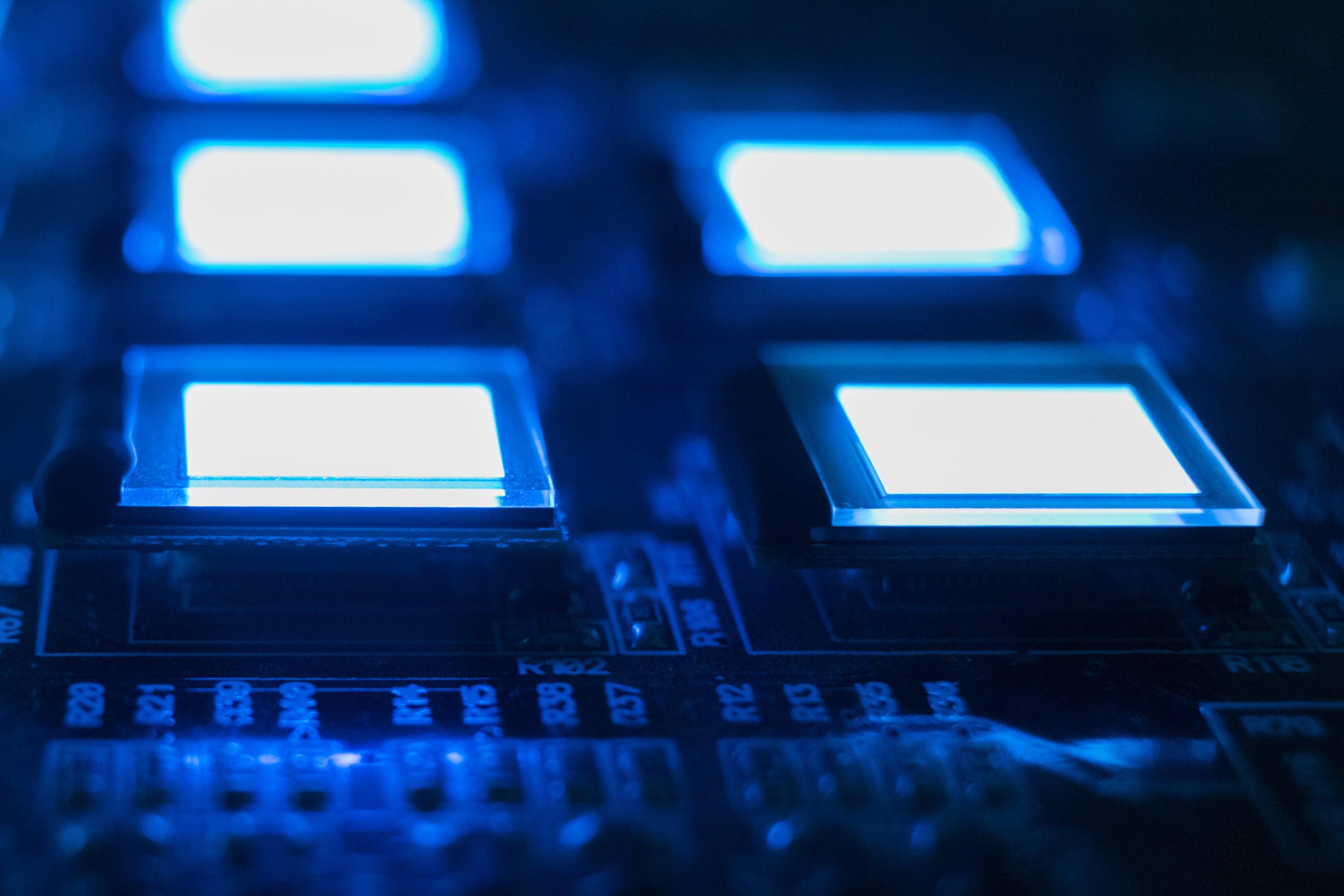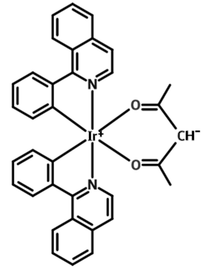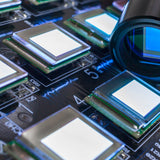What is a PhOLED?

Phosphorescent organic light-emitting diodes (PhOLEDs) are a type of OLED technology that emits light using a process called phosphorescence. They’ve become popular because they’re much more energy-efficient than earlier versions of OLEDs. This makes PhOLEDs ideal for high-resolution displays and lighting.
In PhOLEDs, electric charges combine in an active layer to create light. By tweaking the materials in this layer, the color of the light can be precisely controlled—from deep blue to red—making them incredibly versatile for different applications.
How do PhOLEDs Work?
The structure of a PhOLED is similar to other OLEDs, with multiple layers working together to transport charges and create light. These layers include charge injection layers, charge transport layers, and the light-emitting layer, where the actual light generation occurs.
PhOLEDs use distinct and specialized OLED materials in their emissive layer to achieve superior performance:
- Phosphorescent emitters: These are molecules that emit light through phosphorescence, converting nearly all the electrical energy into light.
- Host Materials: These materials, also used in traditional OLEDs, support the emitters by efficiently transferring energy and ensuring balanced charge transport. They help prevent energy losses and maximize light output.
Together, these materials produce bright, energy-efficient light with minimal energy wastage. Unlike traditional fluorescent OLEDs, which achieve only about 25% efficiency, PhOLEDs convert nearly all their input energy into light. This results in brighter displays, lower power consumption, and devices with longer lifespans. PhOLED technology is a game-changer for modern displays and lighting systems.
Advantages of PhOLEDs
PhOLEDs offer several compelling benefits that make them superior to earlier OLED technologies. The unique design and materials in PhOLEDs allow them to achieve near-perfect efficiency in converting electrical energy into light. This opens the door to high-performance, energy-saving devices for a wide range of applications.

Key Advantages
- High Efficiency: PhOLEDs use nearly 100% of their energy for light production, compared to only 25% in traditional OLEDs.
- Wide Color Range: Through careful material selection, PhOLEDs can emit a full spectrum of colors, making them suitable for vibrant displays.
- Access to Blue Light: PhOLEDs' superior efficiency makes them better suited for producing stable and long-lasting blue light, a critical component for full-color displays and white light applications.
- Customizable Design: The molecular components can be engineered to meet specific needs, like brightness, lifetime, or color purity.
- Lightweight and Flexible: Their organic nature makes PhOLEDs ideal for thin, portable, and flexible devices.
- Lower Power Consumption: High efficiency translates to reduced energy usage, extending the life of batteries in portable devices.
PhOLED vs OLED
Over 1 billion OLED panels are produced annually by various manufacturers. The market is continuing to grow due to OLEDs' superior image quality, compact form factors, and flexibility. But how does the newer PhOLED technology stack up in comparison?
| Feature | PhOLED (Phosphorescent OLED) | OLED (Fluorescent OLED) |
|---|---|---|
| Light Emission Mechanism | Phosphorescence | Fluorescence |
| Efficiency | ~100% internal quantum efficiency | ~25% internal quantum efficiency |
| Energy Usage | Lower power consumption due to higher efficiency | Higher power consumption |
| Color Range | Wide range, including vibrant blues, greens, and reds | Limited color range, especially for blue |
| Material Cost | Higher (requires precious metals like iridium or platinum) | Lower (no precious metals needed) |
| Device Lifetime | Shorter for blue emitters due to degradation issues | Typically longer-lasting for blue emitters |
| Applications | High-end displays, advanced lighting systems | Basic displays, cost-sensitive applications |
| Production Complexity | More complex, requires multilayer architectures | Simpler to manufacture |
PhOLED materials specifically address one of the biggest challenges in OLED technology: blue light emission. Blue light is higher in energy, making it difficult to create stable, long-lasting devices capable of producing it. However, the superior efficiency of phosphorescent emitters makes them better suited for achieving reliable blue light emission. This paves the way for advancements in full-spectrum displays and white lighting systems.
Challenges for PhOLEDs
Despite their advantages, PhOLEDs are not without limitations. Researchers are working to address these issues to make the technology more durable, cost-effective, and efficient.

Key Challenges
- High Material Costs: PhOLEDs rely on precious metals like iridium and platinum in their dopant materials, which increases production costs.
- Degradation and Lifetime Issues: Blue emitters, in particular, tend to degrade more quickly due to molecular instability.
- Efficiency Roll-Off: The luminous efficiency of PhOLEDs decreases at higher brightness levels, a challenge for applications requiring intense light output.
- Complex Architectures: Achieving optimal performance often requires intricate, multilayer designs, increasing manufacturing complexity.
- Energy Losses: Non-emissive processes reduce PhOLED energy efficiency.
Researchers are working on solutions, including cheaper materials, more robust designs, and ways to prevent energy losses. These innovations aim to make PhOLEDs even better and more accessible in the future.
Conclusion
PhOLEDs represent a significant leap forward in OLED technology, offering unmatched energy efficiency, vibrant color control, and design flexibility. While challenges like high material costs and durability remain, ongoing innovations in materials and device architecture promise to unlock the full potential of PhOLEDs for future displays and lighting solutions.
OLED Materials

Keep Reading...
 What is AMOLED? Active Matrix OLED Technology
What is AMOLED? Active Matrix OLED Technology
The acronym AMOLED stands for active-matrix organic light-emitting diode. It is a type of OLED technology commonly used in large and advanced display systems. The term "active matrix" refers to the arrangement of light-emitting pixels, each controlled by its own dedicated thin-film transistor (TFT) and storage capacitor.
Read more...In PhOLEDs, charge carriers are injected from the electrodes into the organic layers, where they recombine in the emissive layer to radiatively emit phosphorescence. Find out more.
Read more...Contributors
Written by
Application Scientist
Diagrams by
Graphic Designer
We used pre-trained AI to help us write this page. As part of our editorial process, our in-house experts review, fact-check, and edit all AI-generated content to make sure we provide you with accurate and helpful information.